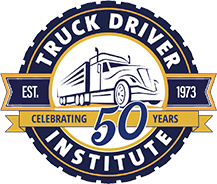Do You Need A CDL To Drive A Box Truck? (Updated 2024)
Curious about whether you need a CDL to drive a box truck? The answer is no, for the most part. However, the longer answer is a bit more complex and varies depending on the size and Gross Vehicle Weight Rating (GVWR) of the truck you are driving.  A commercial driver’s license (CDL) is required for a number of different vehicles, including tractor trailers, flatbed trucks, and more. However, the CDL requirements for a box truck are actually based on the vehicle’s Gross Vehicle Weight Rating (GVWR), which can change from truck to truck. Box trucks that have a GVWR of less than 26,000 pounds do not require a CDL holder to drive them. Of course, it’s critical to check what your box truck’s GVWR is before you drive it to make sure you are in compliance with your state’s laws.
A commercial driver’s license (CDL) is required for a number of different vehicles, including tractor trailers, flatbed trucks, and more. However, the CDL requirements for a box truck are actually based on the vehicle’s Gross Vehicle Weight Rating (GVWR), which can change from truck to truck. Box trucks that have a GVWR of less than 26,000 pounds do not require a CDL holder to drive them. Of course, it’s critical to check what your box truck’s GVWR is before you drive it to make sure you are in compliance with your state’s laws.
Read on to learn more about box trucks, who can drive them, and how they’re used in the commercial driving industry.
What Is a Box Truck?
Before we dive too deep into the CDL requirements of box truck drivers and some of the technical jargon in the commercial driving industry, let’s first define and examine box trucks so we know we are all on the same page.
A box truck is a category of truck defined by a few key characteristics:
- Box trucks have a stretched frame with a cargo box bolted to the chassis.
- The cargo box is totally separate from the cab and can’t be accessed from the cab area.
- Most box trucks have a rear roll-up door.
Unlike semi-trailers, box trucks are one solid piece of equipment. Semis are larger trucks with far more wheels to carry larger loads of cargo. They also have cabs that are totally separate from the trailers that they carry so that new cargo loads can simply attach and detach at shipment points.
Box trucks and semis usually serve completely different purposes and have totally different licensing requirements.
Who Can Drive a Box Truck?
As previously mentioned, box trucks are defined by a few characteristics, but that doesn’t mean they can necessarily be regarded as just one thing. Box trucks come in all shapes and sizes and the answer to who can drive them actually depends on their specific GVWR.
Most box trucks are under the threshold of needing an auxiliary license to drive them. So when you think of the typical box truck, you probably think of things like:
- Moving trucks
- Delivery trucks
- Service trucks
- Rental business trucks
Tons of businesses use box trucks because they drive very similarly to large vehicles that people are used to and can be used without much training or practice.
However, in reality, box trucks take some skill to drive and accidents happen all the time when inexperienced drivers move their furniture or belongings in large trucks they can’t handle or control on the road.
So the question should really be, “Who should drive a box truck?”. The answer is someone with sufficient expertise who understands the truck’s capabilities, braking power, and shortcomings should something go wrong.
Do You Need a CDL to Drive a Box Truck?
For the most part, you do not need a CDL to drive a box truck. The typical rental box truck driver wouldn’t even consider this question in the first place. You may have seen moving trucks up and down streets carrying peoples’ furniture. If you can walk into a rental shop and pick out that truck, you definitely do not need a CDL to drive it.
The parameters for whether or not you need a CDL to drive a box truck are actually quite simple. If the Gross Vehicle Weight Rating (GVWR) is above 26,000 pounds, you need a commercial driver’s license (CDL) to operate it.
One very important thing to note is that GVWR does not actually refer to how much the truck currently weighs. It wouldn’t make sense to have the licensing requirement differ based on the weight of the contents in the truck. In fact, the GVWR actually refers to how much weight the vehicle is rated to carry, which is just another way of saying how large the truck is.
To find the GVWR, you simply have to look inside the door jam of the truck. The inside sticker lists the Gross Axle Weight Rating (GARW) for both the front and rear axles. Add those two numbers together and that equals your GVWR.
What You Need to Know Before Driving a Box Truck
Before you get behind the wheel of a box truck (even if you don’t need a CDL), it’s important to follow basic safety precautions.
These vehicles operate nothing like a sedan or even a pickup truck and need to be treated with a bit more caution and respect than smaller vehicles on the road.
Remember to inspect your mirrors before you get going. Because you won’t be able to look out the rear window, your mirrors are one of the most critical tools in the truck. Make wide turns and signal early so you can let cars behind you, and especially bicycles and small vehicles, know your intentions far ahead of time.
Finally, if it’s your first time driving a box truck, do not attempt tricky maneuvers like parallel parking unless you have a trusted spotter who can guide you along the way.
Get Your Box Truck CDL at Truck Driver Institute.
Although most box trucks don’t require a CDL to operate, the larger ones do. So, what do you do next? To get your commercial driver’s license, there’s no better place than Truck Driver Institute. For nearly 50 years TDI has provided high-quality driver training from expert instructors.
You can operate nearly any vehicle with a Class A CDL, but most box truck operators would only require a Class B CDL (if any at all). With a Class B CDL, you can drive a number of vehicles including:
- Metro busses
- School busses
- Tour busses
- Passenger vans
- Delivery trucks
- Dump trucks
- Cement mixers
- Box trucks
- Straight trucks
- Tilt beds
- …and more!
With a Class A CDL, you can drive even larger vehicles such as semis and other long-haul and industrial equipment.
Truck Driver Institute has 10 locations across the country and there is a national shortage of qualified drivers in nearly every commercial driving field. Sign up for Truck Driver Institute today and get rolling!
Frequently Asked Questions about Box Trucks and CDL Requirements
What is the biggest box truck you can drive without a CDL?
You can drive a box truck with a Gross Vehicle Weight Rating (GVWR) of up to 25,999 pounds without a Commercial Driver’s License (CDL). Any vehicle with a GVWR of 26,000 pounds or more requires a CDL to operate legally.
How much does a 26ft box truck weigh?
Typically, a 26-foot box truck has an empty weight ranging from 12,500 to 16,000 pounds. When fully loaded, the weight can exceed 26,000 pounds, at which point a CDL is required for operation.
What is the heaviest you can haul without a CDL?
You can haul with vehicles that have a total GVWR under 26,000 pounds without needing a CDL. This weight limit includes both the vehicle and its cargo.
What factors determine if I need a CDL for a box truck?
The need for a CDL when driving a box truck primarily depends on the truck’s GVWR, which must be less than 26,000 pounds for non-CDL operations. Additionally, the type of cargo and state-specific regulations also play crucial roles. For instance, hauling hazardous materials generally requires a CDL regardless of the vehicle’s weight.
Are there different classes of CDL for different sizes or types of box trucks?
Yes, there are several classes of CDL—Class A, B, and C—that depend on the size and type of the vehicle as well as the kind of cargo. For example, a Class B CDL is typically required for single vehicles like straight box trucks weighing 26,000 pounds or more. The type of cargo, like hazardous materials, may require endorsements that can be added to any class of CDL.
Can I drive a box truck for personal use without a CDL?
Yes, if the box truck’s GVWR is under 26,000 pounds and you are not using it for commercial purposes, you can generally drive it without a CDL. However, it’s essential to check specific state regulations as they can vary.
What training is recommended for driving large box trucks safely?
Even for non-CDL box trucks, it is advisable to undergo some form of professional driving training. Training programs often cover essential driving skills, safety protocols, and maneuvering techniques that are crucial for handling larger vehicles safely on public roads.
Get Started
Get your Class A CDL in our friendly, supportive CDL training program. TRAIN with experienced instructors – multiple good-paying, secure job choices with benefits available for eligible graduates. EARN $700 – $1000+ / week to start as a truck driver. Get started today by filling out the form below. We look forward to hearing from you!




